Peter Lobner, Updated 7 July 2021
Virgin Orbit Cosmic Girl and LauncherOne
On 17 January 2021, Virgin Orbit conducted an airborne launch from their modified Boeing 747-400 “mothership,” Cosmic Girl, and their LauncherOne rocket boosted a payload of 10 small CubeSats into low Earth orbit. This marks the first commercial orbital mission for Virgin Orbit.
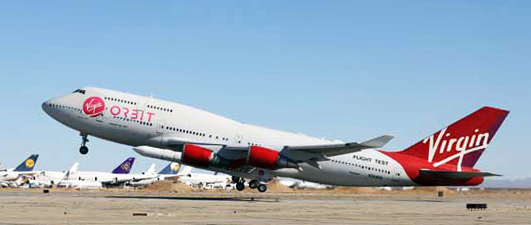
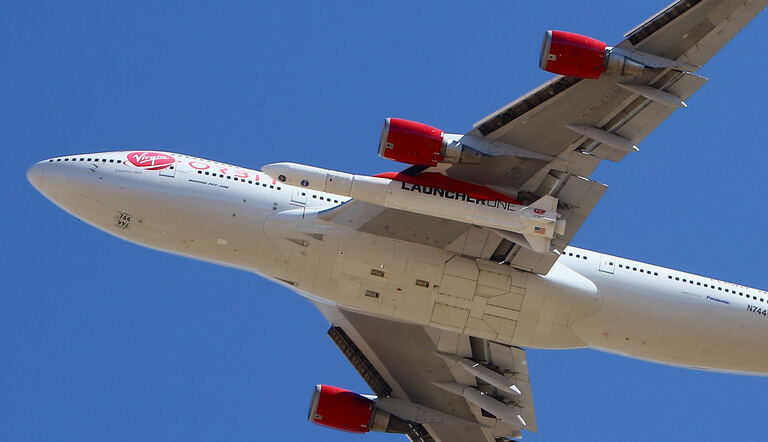
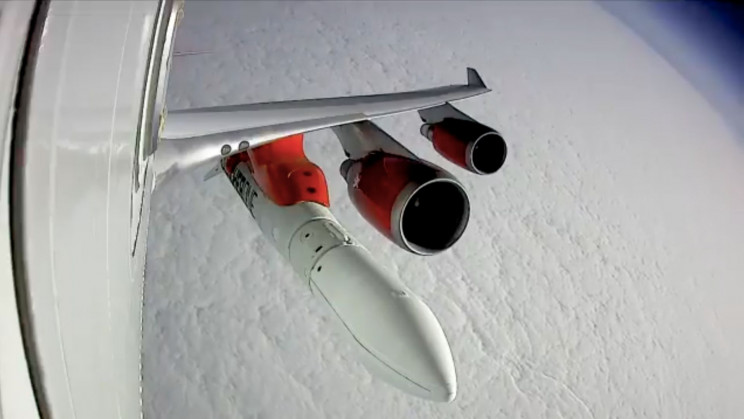
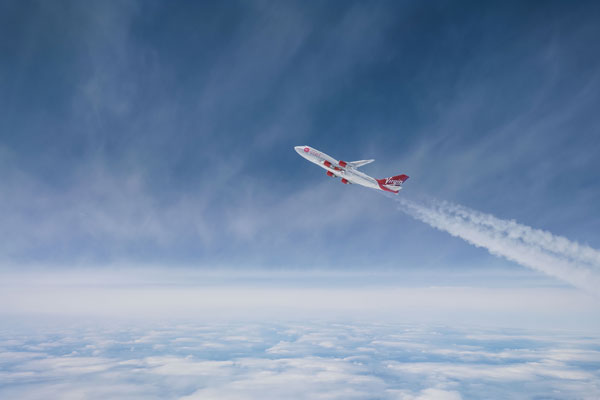
at an altitude of about 35,000 ft (10,688 m) during a test flight test
on 12 April 2020. Source, three photos above: Virgin Orbit
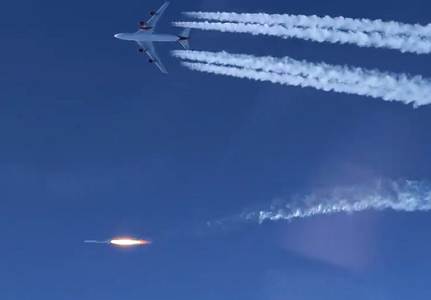
You can watch a short video of the launch here: https://www.youtube.com/watch?v=DU1YQWfhb4c
LauncherOne is a 70 foot long (21.34 meter), liquid fueled, two stage booster rocket that can deliver a 300 to 500 kg (661 to 1,102 lb) satellite payload to orbit. Due to the flexibility of using an airborne launch platform, the satellite can be placed into an orbit at any inclination between 0° (equatorial) to 120° (30° retrograde).
NASA sponsored the 10 CubeSats launched on 17 January under their Educational Launch of Nanosatellites (ELaNa) program. NASA also funded the launch under its Venture Class Launch Services (VCLS) program.
This was Virgin Orbit’s second attempt to launch satellites into orbit with LauncherOne. The first flight on 25 May 2020 failed due to a break in a propellant line for the first stage engine.
You’ll find more information on the Virgin Orbit website here: https://virginorbit.com
Stratolaunch Roc
In my 15 April 2019 post, you’ll find details on the giant Roc airborne launch platform developed by Paul Allen’s firm Stratolaunch Systems Corporation and flown for the first time on 13 April 2019: https://lynceans.org/all-posts/paul-allens-stratolaunch-aircraft-makes-its-first-flight-but-with-an-uncertain-business-plan/
After Paul Allen’s death on 15 October 2018, the focus of Stratolaunch changed dramatically and Roc has remained grounded at the Mojave Air and Space Port since its first flight.
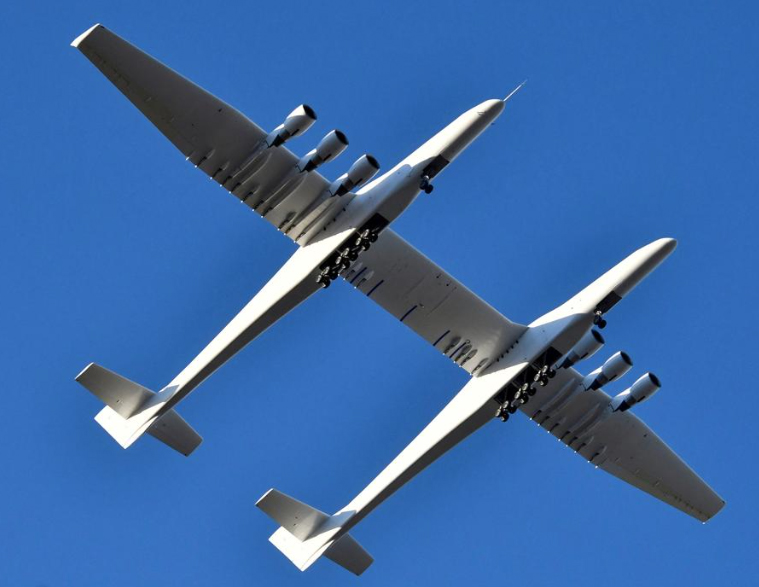
It appears that, on 11 October 2019, Stratolaunch Systems was sold by its original holding company, Vulcan Inc., to an undisclosed new owner. Since then, Stratolaunch has put increased emphasis on using the Roc as an airborne launch platform for testing hypersonic vehicles. On 10 November 2020, Alan Boyle, writing for GeekWire , reported, “Today, Stratolaunch announced that it’s partnering with an aerospace research and development company called Calspan to build and test models of its Talon-A hypersonic vehicle, a reusable prototype rocket plane.”
The Stratolaunch website is here: https://www.stratolaunch.com
Northrop Grumman Stargazer and Pegasus
Since 1990, Northrop Grumman Innovation Systems (formerly Orbital ATK and before that Orbital Sciences Corporation) has offered airborne launch services with their converted Stargazer L-1011 mothership and Pegasus booster rocket. From a launch altitude of about 40,000 ft (12,192 m), a three-stage Pegasus XL can carry satellites weighing up to 1,000 pounds (453.59 kg) into low-Earth orbit.
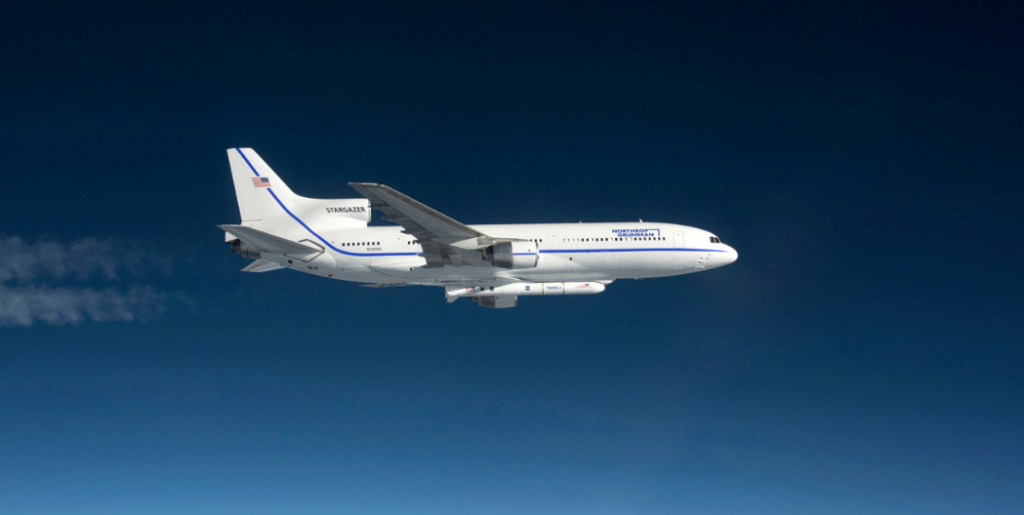
Source: Northrop Grumman
The Northrop Grumman webpage for their Pegasus launch vehicle is here: https://www.northropgrumman.com/space/pegasus-rocket/
For more information:
Virgin Orbit:
- “Virgin Orbit LauncherOne Data Sheet,” Space Launch Report: https://www.spacelaunchreport.com/launcherone.html
Stratolaunch:
- Jeff Foust,” Stratolaunch to resume test flights in September,” SpaceNews, 4 March 2020: https://spacenews.com/stratolaunch-to-resume-test-flights-in-september/
- Alan Boyle, “Stratolaunch teams up with Calspan and makes progress on hypersonic flight plan,” GeekWire, 10 November 2020: https://www.geekwire.com/2020/stratolaunch-teams-calspan-makes-progress-hypersonic-flight-plan/
Northrop Grumman:
- T. Rogoway & J. Trevithick, “Is The Stargazer Air-Launch Mothership About To Test A Secretive Air Force Payload?,” TheDrive, 13 August 2020: https://www.thedrive.com/the-war-zone/35684/is-the-stargazer-air-launch-mothership-about-to-test-a-secretive-air-force-payload